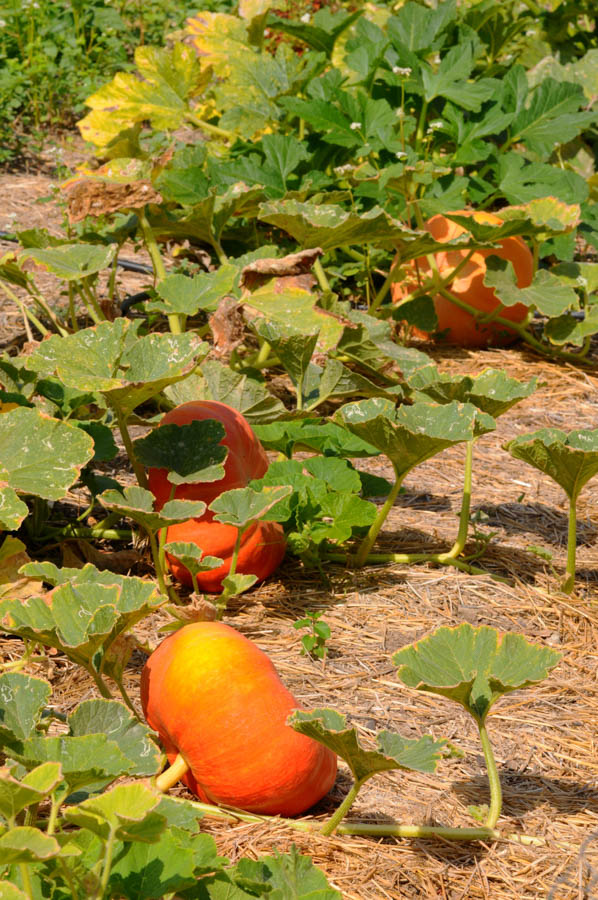4 Tips For a Hassle-Free Pumpkin Harvest

Proud gardeners with pumpkins in their patch are eyeing their almost-but-not-quite-ripe pumpkins with anticipation. Here are four tips to make harvesting go smoothly:
Pumpkin plants usually have prickly leaves or stems. Wear gloves or protective clothing to avoid irritating your skin when working with your plants, handling the stems, or harvesting the pumpkin fruits.
Use a knife or pruning shears to cut pumpkins from the vine. Loppers or a pruning saw may be needed to cut thick stems. Leave 3 to 6 inches of stem above the fruit, and avoid using the stem stub as a handle for lifting or moving a pumpkin. A sufficient stem stub slows and reduces microbial infection entering the stem and results in a longer storage period for the pumpkin.
Once all pumpkins have been harvested, remove and discard all pumpkin plants. Compost plants that are free of disease, but dispose of vines infested with powdery mildew in the city green waste bin.
Many pumpkin varieties are cured after harvesting. Curing reduces water in pumpkin fruits and hardens their skins, preparing them to last as long as possible in storage. Curing also tends to increase sweetness of pumpkins because it reduces their water content in proportion to sugars. Pumpkin fruits are ideally cured unwashed outdoors in sunlight at warm temperatures (ideally about 80° to 85°F) for about 7 to 14 days. Fruits should be kept dry while curing, and may need part shade to avoid sunscald, particularly during warm-to-hot weather. They can be cured indoors in a well-ventilated area if weather is cool or rainy, or if curing fruits may be subject to wet soil, sprinklers, or other irrigation.
Don’t know your GardenZeus climate zone? Click here.
With pumpkin plants gone, your garden may be bare. Read Darren’s tips for managing fallow beds:
Tips for Managing Fallow Garden Beds and Containers
And here are some ideas for replacing your pumpkins with cool season vegetables:
Beet Varieties for Mediterranean Climates
Choosing Arugula Varieties for the Mediterranean Garden